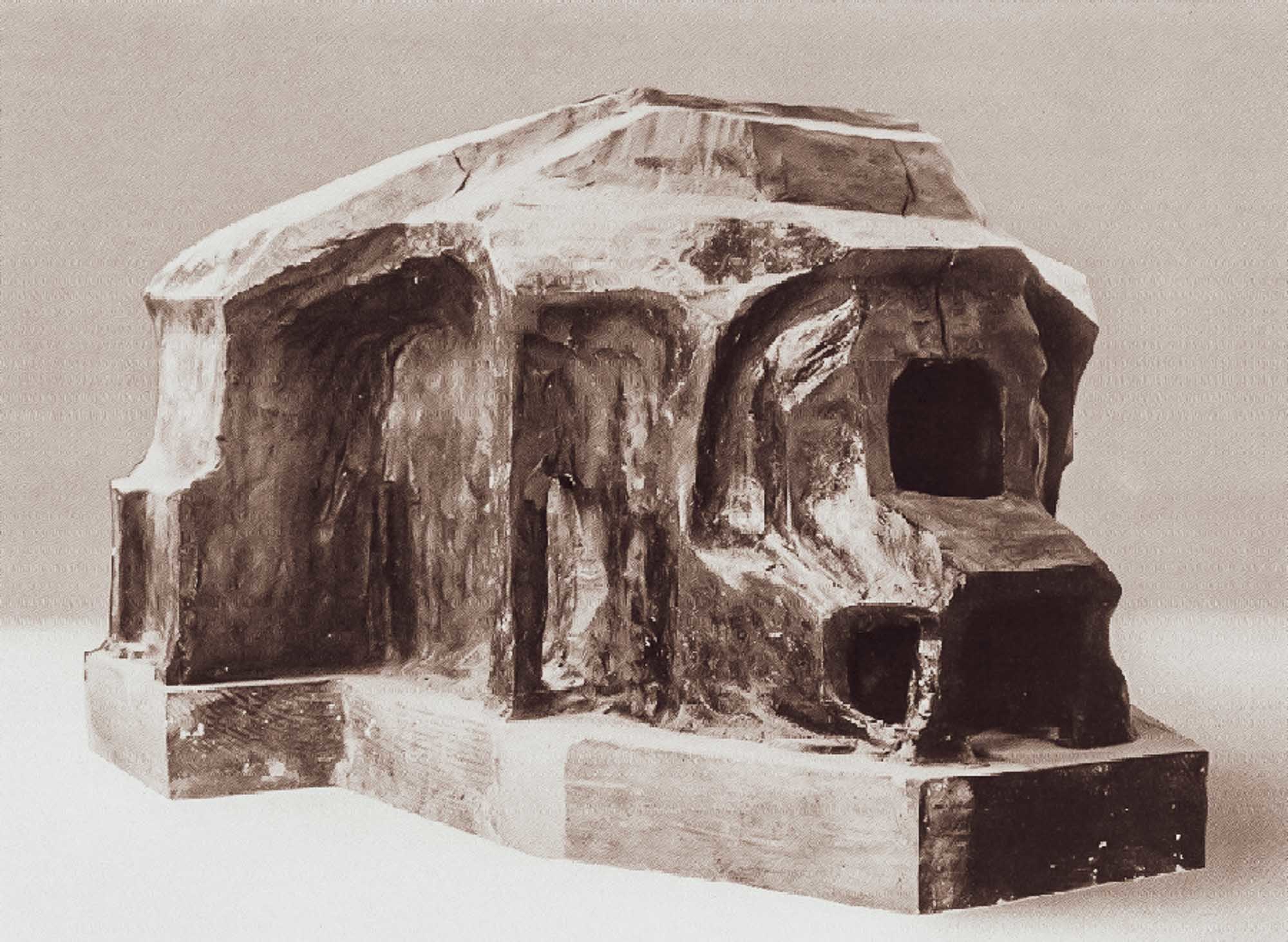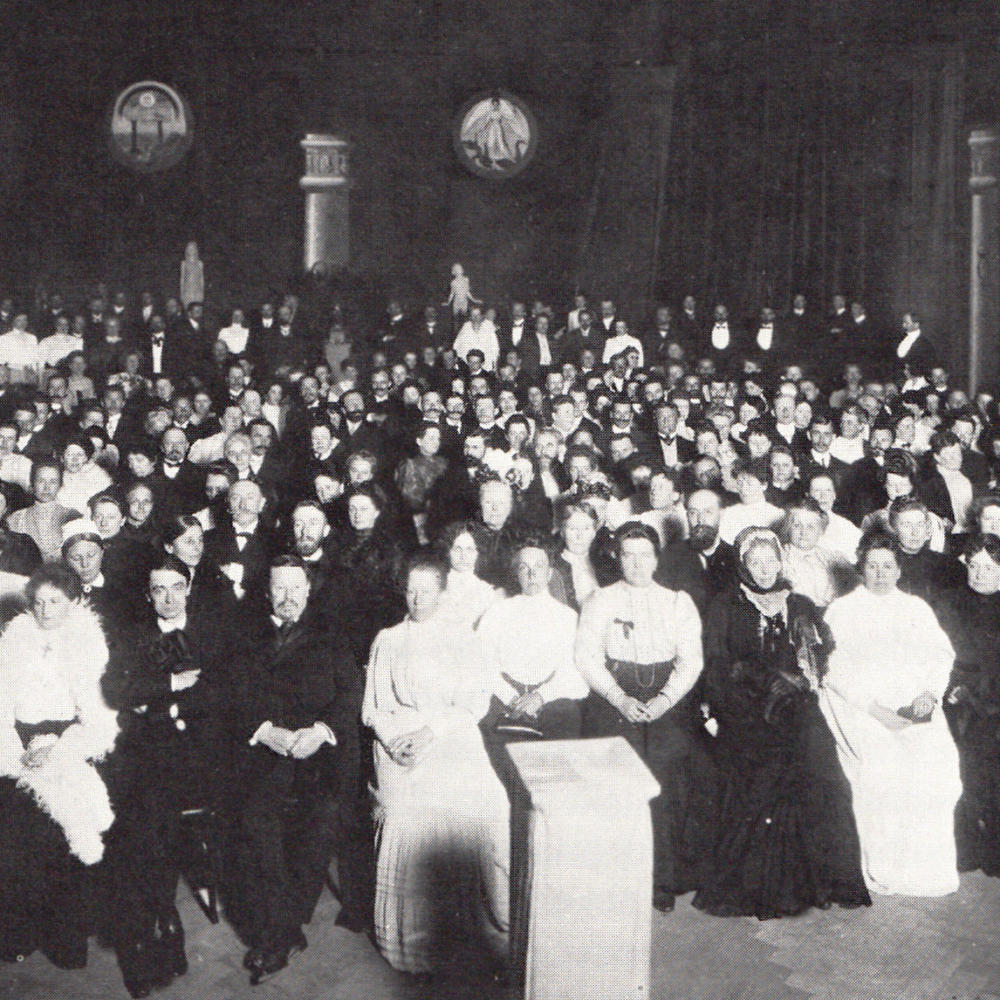History
The General Anthroposophical Society was founded at the Christmas Conference in Dornach in 1923. However, the history of the Anthroposophical Society began earlier, with the development of the German section of the Theosophical Society.
Beginnings and Bases 1902-1912
Rudolf Steiner became General Secretary of the Theosophical Society in Germany in 1902, where he found interested parties for his concern: to work in a cultural-social way from an intellectual practice. Theosophical Society is established in the German-speaking area, international lectures are held in a variety of languages, and fundamental works on anthroposophy are written.
Foundation of the Anthroposophical Society and Cultural Initiatives 1912-1923

On 28.12.1912 the Anthroposophical Society was founded in Cologne with about 3000 members. Diverse artistic activities: 1910-1913 Summer Festival in Munich with performances of "Mystery Dramas". During the First World War, the first Goetheanum was founded in Dornach near Basel/CH with the collaboration of artists and helpers from all European countries. In post-war Germany, proposals for a "tripartite structure of the social organism" are presented. In 1919 the first Waldorf School was founded in Stuttgart and approaches to anthroposophically extended medicine were presented. The Goetheanum is destroyed by arson on New Year's Eve 1922/23.
Restructuring and deepening. Reestablishment of the Anthroposophical Society 1923-1925.

The international development and growth of the company's activities make restructuring necessary. In 15 countries there are national companies and further national groups with approx. 12000 members. New foundation of the Anthroposophical Society. The School of Spiritual Science with Sections for General Anthroposophy, Pedagogy, Medicine, Mathematics, Natural Sciences etc. is established by Rudolf Steiner. The decision is taken to rebuild the Goetheanum as the centre of activities. The foundations of biodynamic agriculture and anthroposophical curative education are laid.
After Rudolf Steiner's death. Inner differentiation. World war situation 1925-1945

Rudolf Steiner dies on 30 March 1925. The Swiss poet Albert Steffen becomes Chairman of the Society. The restructurings remain fragmentary and the worldwide initiatives are continued. The second Goetheanum opens in autumn 1928. On November 1, 1935, the National Socialists banned the German national society with the largest number of members. Parts of the Anthroposophical Movement continue to work independently of society after internal conflicts. Marie Steiner stages Goethe's "Faust" at the Goetheanum 1938 in both parts unabridged (world premiere). The activities are considerably restricted by the war.
Development and consolidation 1945-1968

Intensive basic work, development work and institutionalisation. Rudolf Steiner Houses as cultural centres are being built in larger cities around the world. Local groups ("branches") develop basic principles and form a forum for initiatives. Institutions, seminars and training centres of anthroposophically oriented pedagogy, agriculture, curative education, art, etc. are being set up all over the world. The foundations for an anthroposophically extended banking system are being worked out.
Distribution and professionalisation 1969-1989

Generation change. In the course of the general social upheavals, anthroposophically extended medicine, pedagogy, curative education and agriculture are spreading all over the world with schools, farms, homes and corresponding training centres on all continents. Cultural initiatives in social hotspots such as South Africa, South America, in the penal system, in addiction therapy, etc. are developed. Regional and international conference culture.
Pluralisation and questions of identity 1990 to today

The questions posed in the anthroposophical context at the beginning of the 20th century have now become the basic social problem of the civilized world. A partial integration of anthroposophical approaches into the cultural life of the western world is emerging. A link to the founding impulses of the General Anthroposophical Society contours the focus in the expansion of the School of Spiritual Science. Today the Anthroposophical Society has 52,000 members and national societies in 50 countries. Approximately 10000 anthroposophically based institutions operate worldwide.

